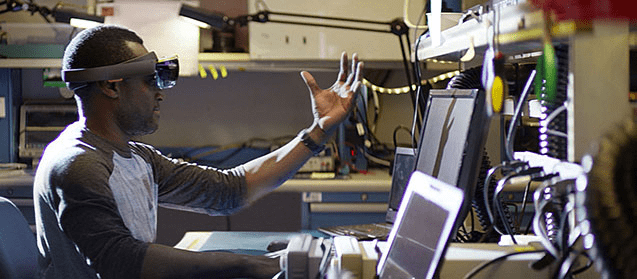New Business Models for the Internet of Things, People, and Services

In my past blogs we explored the idea of how to achieve business transformation with the Internet of things, people and services (IoT/P/S) and have discussed how we see the customer-facing organization morphing. In my latest conversations with IoT leading companies, two key questions continue to arise: how significant does this transformation need to be, and what is Microsoft’s role in the IoT/P/S world?
Let me first address how—and how big—things will change in two specific ways: the first major change calls for a revolution because it allows manufacturers to do things that couldn’t be done before. This is essentially the result of new technologies like cloud and big data, which now allow us service equipment from remote locations via “virtual engineers” or help a person to complete complex tasks that would normally require the skills of a highly trained onsite engineer. Today, this can be accomplished through the use of real-time video or data streaming—or even the combination of virtual reality with augmented reality like with Microsoft HoloLens. This a good example of leveraging Microsoft Azure to combine structured and highly unstructured data to produce intelligent and productive outcomes.
In this context, manufacturers experience the expansion of business capabilities to capture revenue from new service offerings instead of just enjoying traditional product revenue. This dimension of change is disruptive to the market and creates significant differentiation by securing and making strategic use of a new competitive advantage. To give you an idea of what’s possible, take the example of what Kuka is doing with smarter robots that interact with humans. Now, manufacturers can truly make artificial and human intelligence collaborate at their best. Because of unlimited storage and the ability to generate new knowledge fast by applying Machine Learning techniques to data lakes and real-time streams of data, there’s also great opportunity for people to be engaged and participate in a more intelligent ambience. A good example of this is what Fujitsu and Microsoft are doing to improve product quality, streamline systems, and enhance functionality while reducing costs with the new Eco-Management Dashboard. Both of these examples are intimately related to the front end of the manufacturing value chain, allowing manufacturers to morph consumer or industrial product offerings into service offerings.


The second major change comes from doing things significantly better than what we have been doing in the past. This second angle is related to how we improve our internal operations through the visibility and transparency of information flows across things and people. We can do things like reduce the costs of maintenance and energy, while increasing quality and asset uptime by using advanced analytics with technologies like Machine Learning that enable condition-based management and monitoring. Manufacturers today are experiencing a step-change in productivity by simply connecting people to the things they do and the information they need via natural user interfaces that are key for their day-to-day role. Take the example of what Iconics is doing on the plant floor to help operators connect to equipment and to back end systems using industrial automation industry standards.
It is good now to point out the common denominator of the two types of change I just mentioned: for the first time in a couple of decades, the pace of technology evolution has outpaced the pace of business practice advancement. We are entering a moment where business processes can change again; it’s up to us, industry practitioners, to create new competitive advantage. In essence, with more personal computing, manufacturers can reinvent productivity and empower people to achieve more. To motivate your thinking, I offer the simplified image below that shows you examples of how the business models are expected to change in the value chain if we are ambitious enough; the red items indicate the greatest areas of impact in my point of view.

Microsoft’s role is one of a strategic partner who can help manufacturers drive this transformation within their businesses. With exciting cloud technologies like Microsoft Azure IoT Suite, Office 365 and Microsoft Dynamics CRM Online, our strategy for IoT is about creating opportunities for manufacturing leaders to put digital technology—in all of its different forms—to work for them in big ways. Specifically, our IoT value proposition for manufacturers spans three core areas:
1.The risk of business transformation is significantly lower than before. Long gone are the days when you needed to have deep pockets and the patience to wait years to start experiencing the benefits of technology modernization. Microsoft IoT technologies are easy to implement in a matter of weeks and can quickly show you the benefits of an affordable, end-to-end solution. No matter how big or small your business is, you can experiment with IoT right away.
2.The end-to-end IoT solutions that our customer and partners are building are truly comprehensive and serve as best practice examples of what you can achieve in your own business. We do not expect to continue to see niche solutions or fragmented approaches that don’t take advantage of the real value of IoT. Now, you can connect with any existing technology landscape on-premise or in the cloud and realize benefits from four key pillars: connectivity, data storage and analytics, advanced analytics, and the integration of people-to-business processes.
3.Business transformation can be easily achieved in a modular approach. You don’t need to rip and replace your entire infrastructure. Microsoft’s interoperable platforms help you interoperate as well with non-Microsoft software and assets. You can change technology as you change business practices and you can enable any of the four basic tenets of an interoperable IoT system one at the time, depending on your strategic business transformation needs or phase of your journey.
Soon you will find that as you engage in this kind of transformation, ideas will flourish and the speed at which your business can innovate and grow is faster than ever before. If you want to learn more about how IoT is driving unprecedented change and innovation in the manufacturing industry, read about the top trends we are seeing within this new digital era of business.




